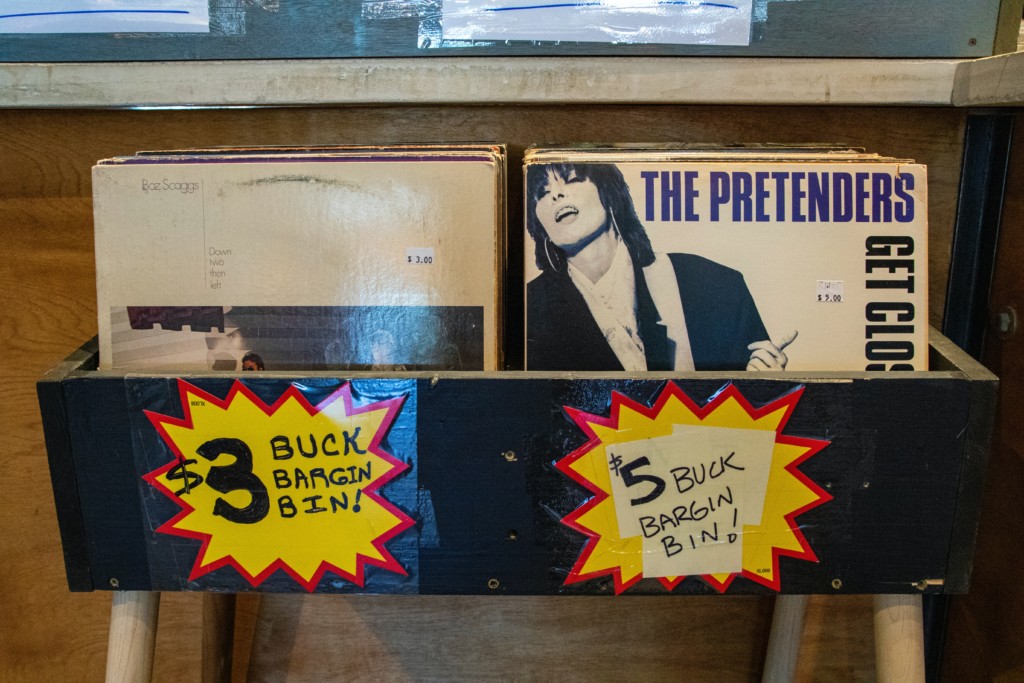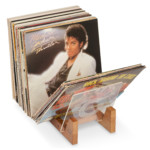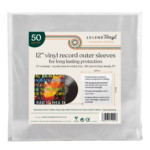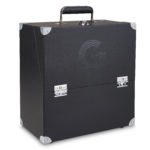Are you looking to find out how much your records are worth? Are you finding it hard to categorise just how worn out they might be by the hours you have spent spinning them (or not as the case may be)? Have you been longing for a way to easily categorise the wear and tear of your record collection for sale?
Well, look no further, for today we will be traversing from pole to pole the spectrum of the Basic Universal Grading System, starting with the Mint condition records and ending with Bad records that deserve to be kept under lock and key.
Table of Contents
- Mint M Condition
- Near Mint NM Condition
- Excellent E Condition
- Very Good Plus VG+ Condition
- Very Good VG Condition
- Good G Condition
- Fair F Condition
- Poor P Condition
- Bad B Condition
- Final Tones
- FAQs Record Grading

Mint M Condition
Grading vinyl records that are deemed to be in mint condition will be those considered perfect and unmarred, more or less coming in a condition that is brand new. The disc itself will be untouched by surface marks, groove wear, ring wear, surface noise, or anything that might otherwise affect the overall sound quality.
Likewise, this quality will also be reflected in the record’s sleeve, which will be entirely unaffected by any light marks or anything that would otherwise eschew the appearance of it being brand new. Many mint condition records, in fact, still come in their original plastic wrapping.
It is, however, not too difficult to rewrap a record in cellophane wrap in this way, so any record collector looking to purchase a record in this way ought to be seriously careful where exactly they tread, lest they end up with a record that bastardises the whole vinyl grading system under the guise of a sealed album.
Near Mint NM Condition
In being so closely associated with a mint condition record, a NM record is going to be one that is only slightly out of the reach of being a mint condition record. Where the former will almost certainly never have been opened or played before, the latter will tend to have been opened and either never played or only played a few times.
A near mint condition record will thus be almost entirely perfect, bearing next to no marks on the record itself or the sleeve within which it is contained, unlike some more used records and vinyl albums.
Record collectors are likely to come across a near mint value record far more frequently than its other namesake, as sellers are reluctant to call designate something as mint in condition, preferring instead to simply call it ‘brand new’, or something similar.
Excellent E Condition
Following on sequentially, there is a very slight lessening of quality between a near mint record and an excellent condition record. One of the key indicators between the two is the presence of stress marks on the latter, which bear the resemblance of a few light scuffs born as a result of removal and insertion into the record sleeve, something that is further exacerbated with repeated use and listens.
The gradations in quality between a near mint record and an excellent record will be rather subjective, though in the case of the latter there is at least a bit more of a tolerance for very minor signs of wear and light visible scratches on the album cover and elsewhere that are barely noticeable.
A record of this grading will still only have been played a few more times than a near mint record in the grand scheme of things.
Very Good Plus VG+ Condition
Decreasing in overall quality ever so slightly as we move on sequentially, we reach the VG+ category of record. A record exhibited and sold at this level of the grading might indeed be marred by light scratches, light ring wear, or more. However, no matter what, the marks, scratches, etc, should not hinder the quality of playback.
And the same goes for the sleeve, too, for this is truly something that is supposed to be enjoyed in its own right. No matter the guide to vinyl record sizes, the album art is still going to be printed on a large enough form for the resident record collector to sit back and admire it with a knowingness.
Therefore, if a record has been kept in a strong light for a considerable amount of time (enough that the sleeve is sun bleached and the like), then its currency is no good here.
Very Good VG Condition
Though there is little, as ever, that separates this category of grading from the previous, that which does is of the utmost significance.
While there is no allowance in the prior category for the various marks and scratches to hinder the sound quality, with VG records there is at least some, meaning that small detriments to the overall quality of audio playback are more or less to be expected.
This allowance does not delve much further than slight clicks and pops, erstwhile signs that a record was much loved, both in the care that was attended it and the eventual hairline marks and scratches that were an inevitable result of its frequent spinning.
There is, however, no place for significant surface noise and the like, nor anything else that is going to put a constant strain on the quality of the audio playback.
Good G Condition
A G rated record will be one that obviously exhibits the many tell tale signs of a life spent gladly beneath the needle. There will be a significant and frequently noticeable deterioration in the overall listening experience, to the chagrin of some and to the aggravation of others.
Likewise, the sleeve itself will be subject to a whole host of distortions and detriments, including marks, bends, scuffing, folding, spine splits, and even discolouration as a result of overexposure to UV rays, having not properly heeded how to store vinyl records.
At this point in the grading system, we have already reached a touching stone that many buyers simply refuse to touch unless entirely desperate or unless provided with no other choice. Thus, it is recommended only to really sell at this level, and certainly only to do so if desperate oneself, or if the record is a rare one that is likely to fetch a considerable sum.
I have bought plenty of records at this level of the grading system myself in the past, to varying degrees of surprise and disappointment.
I once, for example, bought a French version of Messiaen’s Trois Petites Liturgies de la Presence Divine, a masterwork of question mark classical music suffused with such eerie atmospheres like a turned corner of an abandoned cathedral filled with ghosts of its past grandeur. The version of the album I bought from Discogs was marred enough that it buried these elements that I so loved about the album under a spun web of crackles and clicks.

Fair F Condition
On a record of this variety, there will be a considerable degree of damage, both visually and in terms of audio playback; significant ring wear left right and centre, light scratches deep into the makeup of the record, minor writing on the record’s jacket, major noise issues, etc.
The sleeve itself will tend to be gravely affected by distortions, sun bleached as in previous categories, though this time at a level taken to extremes. It is not altogether uncommon for a record in this category to even be without a sleeve entirely, coming instead in an inner jacket bound within a cellophane wrapping of sorts.
These once were wonderful records pressed brand new, and sadly they have either been much loved over the years to the point where the listening experience they contain has been seriously compromised, or have been mistreated and abused to a similar degree.
The central difference between these two courses is that in the former the record will likely have lived a longer and happier life in the hands of an owner who loved and cared for them. In the latter, not so much.
Poor P Condition
A record of poor condition will be one that is scarcely even able to play properly and consistently owing to the defects present on the surface. You certainly would not be finding a record like this in a retail store, unless it has been recycled into something else of course.
As with a record in fair condition, it is not uncommon for a record in poor condition to be without a record sleeve altogether. Certainly, if it does come with one, it will be in a compromised and ill condition, with seam splits that mean it can barely stay in one piece, along with the various other aspects of distortion that characterised the previous few pegs of the vinyl grading system.
Sometimes, there will even be chunks missing, cut out markings from years gone by, or else the various extra pieces of the package will be marred or missing.
Bad B Condition
And finally, at the very end of the veritable spectrum of viny record grades, we have a record that is deemed to be in bad condition. You are rarely, if ever, going to find a record in such a condition as this, but I suppose it is worth knowing what to look for, even if it is only for my own peace of mind in rounding off this list.
A record listed in such a category will be borderline unplayable by the very definition of being labelled bad, no matter how many actual records that can be spun perfectly you might deem ‘unplayable’.
Likewise, a bad record is more likely to be scant of sleeve than not, which may even be one of the reasons it is no longer playable, having garnered so many scratches, bumps, and warts along the way without shelter.
Final Tones
So, there you have it! Hopefully this concise exploration of the Basic Universal Grading System has been of some use to you in your own individual circumstances.
Perhaps you are now feeling better able to categorise and sell accordingly your own record collection with this new system. Perhaps you simply understand your own record collection better, safe in the knowledge that you have managed to categorise them accordingly to a more objective and infallible measure of wear and tear.
Long live the Basic Universal Grading System and the foundations which it lays and upon which we reside.
FAQs Record Grading
Records are graded through a system known as the Basic Universal Grading System, which seeks to objectify the process of categorising a record’s wear and tear as much as possible. The system works much like a spectrum, spreading various levels between its two poles at either end: beginning with Mint (almost entirely unplayed and brand new); Near Mint; Excellent; Very Good Plus; Very Good; Good; Fair; Poor; and ending with Bad (which is essentially unplayable).
There are a few key things to consider when attempting to assess the value of a record. The first port of call will undoubtedly be assessing whether or not the record itself and the artist whom it is by are considered desirable. From there, you will want to assess the rarity of the record, the condition that it is presently in (as assessed through the Basic Universal Grading System), what edition of the record it is (i.e. what pressing, whether it is a first pressing of a reissue, etc), among a whole host of other things, including your target audience.
Within the Basic Universal Grading System of viny records, a record that is designated NM will be one that is in Near Mint condition. Looking for a near mint record will yield roughly the same results in your search for the perfect as otherwise. They will be shiny and won’t have any visible defects, there will be no writing, markings, or stickers on the label or sleeve, nor will there be any ring wear, creases, or seam splits. In other words, this will be a near perfect record, with exception of the fact that it has been opened or unsealed.




